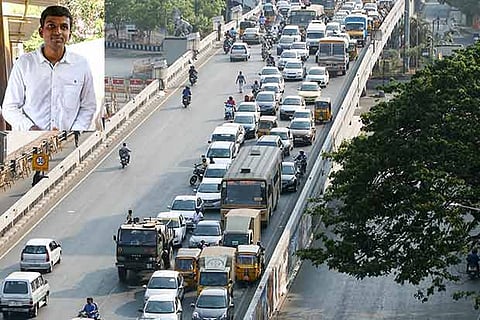

Chennai
The CMRL has thus far been monitoring soil displacement with the help of sensors fixed over ground throughout metro tunnel alignment.
“We have decided to fix sensors below the layer of road for the remaining 1 km underground stretch to be tunneled up to DMS from Thousand Lights,” CMRL managing director PK Basnal told DTNext.
It appears CMRL may have been prompted to upgrade its monitoring mechanism owing to incongruence in soil displacement readings obtained since morning. Chief general manager (underground) VK Singh said the volume of displacement (of soil) recorded at 11 am on Sunday was only 1.5 mm. “Any displacement within 30 mm is considered safe. Since it was only 1.5 mm this morning, we went ahead with the tunneling work,” Singh explained.
(Cracks that appeared on the pavement after a large portion of the road caved in on Anna Salai. Photos: Manivasagan N)
An official release issued by CMRL later in the evening claimed that instrumentation and monitoring points installed to gauge settlement deflection due to ongoing tunneling work at 10 metre interval throughout the tunnel alignment. Reading from these gauges was taken every six hours, it said and added that no settlement was recorded in the reading taken at 2 pm, a few minutes before the cave in occurred.
Pointing to the sink hole, Bansal explained that the layer (read as thickness) of the road was over 2 feet thick on Anna Salai and hence it endured the pressure of the tunneling work for long periods despite having loose soil pockets.
“Other roads would have easily shown signs of crumbling and helped us repair before causing such a sink hole. But here, the road layer was very thick. Hence, it endured the pressure before suddenly caving in,” he explained.
NOT THE FIRST TIME
Here is a glimpse of the other cave in incidents that took place in the City
Visit news.dtnext.in to explore our interactive epaper!
Download the DT Next app for more exciting features!
Click here for iOS
Click here for Android